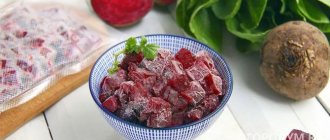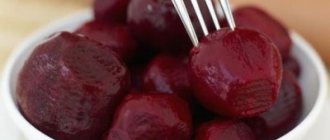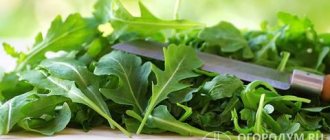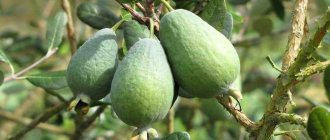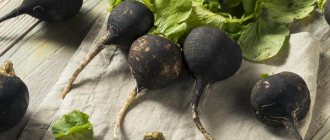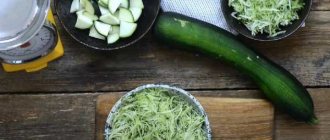Jerusalem artichoke, rich in substances beneficial to our health, has a relatively short shelf life. How to increase its shelf life - is it possible to freeze Jerusalem artichoke? We'll tell you what will happen to the earthen pear after thawing, and which option for freezing Jerusalem artichoke for the winter to choose.
Jerusalem artichoke can be classified as a diabetic product - it helps lower blood sugar levels. Jerusalem artichoke is great for a healthy diet. It contains fiber, various amino acids, vitamins and minerals such as iron, potassium, etc. I want to keep such a useful product for a long time.
The question of whether Jerusalem artichoke can be frozen arises due to the short shelf life of this root vegetable. The fact is that fresh Jerusalem artichoke contains a lot of moisture, but during storage it evaporates, so Jerusalem artichoke quickly fades and its texture changes for the worse. In addition, thin skin contributes to damage and rotting of tubers.
So, is it possible to freeze Jerusalem artichokes in the freezer? Yes, it is possible and this method of preparation will help preserve the vegetable for months.
Is it possible to store earthen pear in the freezer for the winter?
The vegetable is consumed all year round. Ground pear is a frost-resistant plant. Goes well into winter. Leaving the root vegetable in the ground, you can dig it up in the spring and delight the body with vitamins.
Jerusalem artichoke has one drawback - storage. It has a thin skin and cannot last long like potatoes. Fresh Jerusalem artichoke is a juicy fruit with a large amount of moisture. Another feature is that it fades quickly. And even in the underground, in the basement, in boxes with sand, it cannot be stored for long.
But not everyone knows that it can be frozen. The inulin present in the fresh root is only slightly lost in the frozen product. In addition, when the vegetable is frozen, pathogenic microorganisms die, the safety of the fruit improves and all organoleptic indicators are preserved:
- taste;
- color;
- aroma.
Advice
You can freeze root vegetables. You just need to understand how to eat it after defrosting and in what recipe to use it.
Growing problems
Jerusalem artichoke has few pests and, compared to vegetables, few diseases. Most of all, it can suffer from powdery mildew. If it gets into your garden, rest assured that Jerusalem artichoke will not bypass it. Control measures, as on other plants, are spraying with fungicides. Remove particularly affected leaves mercilessly. You can cut out some of the stems to make it easier to process and reduce the density of the bush. Among the preparations, it is better to use those based on copper: Bordeaux mixture, hom, oxychom, copper oxychloride, etc.
Growing problems can also arise in the garden due to the fault of Jerusalem artichoke - on favorable soils (especially peat or light loams), it grows quite aggressively and tends to overwhelm other crops. Therefore, do not plant Jerusalem artichoke in an area where you would like to grow berries or vegetables in the future, or control its growth by digging out shoots that make their way beyond the intended area.
Advantages and disadvantages
The advantages of this storage method:
- Retains nutritional and beneficial properties for 3 months, and with shock freezing for 4 months.
- Root vegetables will not spoil when frozen.
- Any fresh root vegetables are suitable for this storage method.
- Suitable for dietary purposes.
- When thawed, the aroma and taste are preserved.
Disadvantages of freezing:
- If processed incorrectly, color is lost and the product softens.
- Does not retain structure after defrosting.
- With a large harvest, the volume of frozen product is limited by the size of the freezer.
Frozen root vegetables can be stored in the freezer for 3-6 months.
When to collect Jerusalem artichoke leaves for tea
The best time to collect leaves is during flowering. To preserve the collection, the plucked parts of the plant must be thoroughly dried. A warm room with low humidity is suitable for this. It is important that the leaves are not exposed to sunlight, which destroys all the beneficial properties of the plant.
You can use an electric dryer. After processing, the leaves need to be placed either in a fabric bag or in a glass jar, but the first option is preferable - in this case, the collection will “breathe” and will be preserved for a longer time.
How to freeze at home in the refrigerator?
Ground pear can be frozen in different ways:
- entirely;
- in pieces;
- grated on a grater.
It is placed in the freezer immediately after washing or blanched. Moreover, you can blanch with steam, in water or in whey. It all depends on what you will cook later.
Methods
- Just freezing.
- Blanching with water or in milk curd whey.
Advice
Reference! Blanching is immersing the product for a few seconds or minutes in boiling water or another solution. You can also do this over steam. The product is then cooled in ice water or in air. Blanching is very good before freezing. With this preparation, root vegetables retain their color and shape.
You can freeze any fresh root vegetables. Suitable for damaged ones and those with dark spots.
Preparation
Root crops:
- Select suitable ones.
- Wash, clean.
- Cut into small cubes or noodles.
Inventory for different freezing methods:
- Pot.
- Colander.
- Silicone mat.
- Storage container.
Easy way
- Place washed, dried, chopped or grated root vegetables in a plastic bag, release the air and put them in the freezer.
- Another option: carefully place chopped or grated vegetables on a silicone sheet, freeze them, then pour them into a container and leave them for long-term storage.
For storage in the freezer, you can use any small container suitable for freezing.
Blanching
You will need:
- Pot.
- Colander with handle.
Important!
Interesting! When blanched in whey, the vegetable develops a slightly sour, pleasant taste.
Blanching freezing process:
- Pour whey or water into the pan.
- Heat to 100 degrees.
- Place root vegetables cut into cubes or noodles in a colander.
- Lower the colander into the pan so that the cut pieces are in the liquid.
- Secure a colander to the pan.
- Blanch for 9-10 minutes.
- When finished, remove, cool, and let dry.
- Place in a container or any container suitable for freezing food.
Serve in portions as needed for consumption at a time.
Drying methods
Dried Jerusalem artichoke retains almost all the beneficial properties inherent in the root vegetable. You can prepare it in several ways - in the oven, electric dryer or naturally, in the fresh air.
On air
Drying root vegetables in air is one of the most accessible and popular methods that allows you to preserve the main properties. This procedure should be carried out within 5-7 days, which should be sunny and clear. Cloudy weather is not recommended for drying Jerusalem artichokes in the open air, since the process will be significantly delayed, and the root crops themselves risk being damaged by gnats and flies.
It is necessary to place whole or chopped Jerusalem artichoke on parchment paper and expose it to the open air. The product can be considered completely ready as soon as all the moisture has evaporated from it.
In the oven
The oven drying process is faster and can be used at any time of the year, regardless of weather conditions. In this case it is necessary:
- Line clean baking sheets with special baking paper.
- Cut the Jerusalem artichoke tubers into thin slices and place them on lined baking sheets so that they do not touch each other.
- Set the oven temperature at +50 degrees and leave for three hours. During this period, some of the water will evaporate from the chopped tubers.
- Leave the Jerusalem artichoke slices alone for one day so that they can cool naturally.
- Place the chopped root vegetables back into the oven, where they will finally cook at 60 degrees.
The result will be thin and crispy, very tasty slices of Jerusalem artichoke, which fully retain their beneficial properties.
In an electric dryer
An electric dryer is very convenient for preparing such preparations, since it is equipped with several sections and a function for adjusting the temperature level. On the dashboard you can set all the necessary parameters in advance. The device will notify you that the product is ready with a special signal.
Sources used:
- https://nausade.ru/ogorod/kak_hranit_topinambur_kogda_vykapyvat.html
- https://mschistota.ru/storage/kak-xranit-topinambur.html
- https://iplants.ru/garden/topinambur/
- https://agroflora.ru/kak-xranit-topinambur-v-domashnix-usloviyax/
- https://na-mangale.ru/kak-zamorazhivat-topinambur.html
- https://plodogorod.com/ovoshhi/klubneplody/topinambur/topinambur-kogda-sobirat-urozhaj.html
- https://hozzi.ru/hranenie/topinambur
- https://fermilon.ru/sad-i-ogorod/ovoshhi/kogda-vykapyvat-klubni-topinambura-dlya-edy-i-hraneniya.html
- https://uborka-v-dome.ru/kulinariya/hranenie-produktov/kak-hranit-topinambur-zimoj-v-domashnih-usloviyah.html
- https://rusfermer.net/ogorod/korneplody/topinambur/kogda-vykapyvat.html
As it is?
How to eat a frozen product, what is prepared from it?
Once defrosted, you can prepare healthy meals. Jerusalem artichoke is consumed raw, boiled, or stewed. It is especially good when fried; it tastes like fried potatoes, only sweet.
It is used to prepare:
- salads;
- tea;
- coffee drink;
- chips.
Casserole
Ingredients:
- Jerusalem artichoke – 500 gr.
- Fresh carrots – 100 gr.
- Green peas – 100 gr.
- Eggs – 3 pcs.
- Milk – 6 tbsp.
- Salt to taste.
- Oil for frying.
Preparation:
- Fry the carrots grated on a coarse grater, add green peas and defrosted Jerusalem artichoke.
- Beat eggs with milk, pour over vegetables.
- Grease the mold with oil and place the omelette and vegetable mixture into the mold.
- Place in an oven preheated to 180 degrees.
- Bake for 30 minutes.
Important!
Advice! Jerusalem artichoke easily absorbs the aroma of seasonings. Add your favorite spices to the dish to taste.
Cocktail for weight loss
Ingredients:
- Jerusalem artichoke – 100 gr.
- Half a lemon.
- Walnut – 2 pcs.
How to cook:
- It is better if the vegetable is not completely defrosted. Defrost the product, beat in a blender.
- Add lemon juice and ground walnuts. The nut can be ground in a coffee grinder.
This cocktail can replace one meal.
List of storage alternatives
There are many ways to store Jerusalem artichoke, other than in the freezer, and they all depend on the amount of harvest.
For large volumes
- In cellars or basements. Place in boxes, sprinkle with sawdust or sand. There is no need to clear the soil; it protects the vegetables from drying out.
- You can leave them to overwinter in the garden beds. The root crop tolerates frost well. In spring it becomes juicier and sweeter. Be sure to dig it out as soon as the snow melts. But don't forget that mice and rats love vitamins too.
- In snow piles. It is necessary to prepare the place and clear it of snow. Tubers are laid, then a layer of snow. Repeats several times. Place sawdust and straw on top.
- In the trenches. Dig a shallow hole and cover the ground with spruce branches. Place flower pots on top with peeled vegetables already placed in them. Next, cover with snow, then with hay or straw. We cover everything with roofing felt. We store until spring.
General collection rules
For several hundred years, people have been growing Jerusalem artichoke, using it as an affordable food and medicine. There are certain rules for collecting ripe fruits. The harvest can be harvested in late autumn - after the end of the rainy period, but before the onset of the first frost.
However, the more preferable period is early spring, before the tubers begin to sprout. In this case, the maximum vitamins are preserved. Jerusalem artichoke tolerates frosts down to -40 degrees Celsius and is able to survive well in soil layers, so you can dig it up as needed.
Jerusalem artichoke has a characteristic feature - a thin, weak peel. Through it, moisture from the fetal tissues quickly evaporates, which accelerates the aging process. At the same time, it is thanks to this skin that the root crop safely overwinters in the soil without losing its taste, nutritional and healing properties.
It is best to collect Jerusalem artichokes in two stages. Collect one part in the fall, before the onset of frost, and the second in the spring, after wintering. The part of the Jerusalem artichoke that remains in the soil should be covered with snow or dry soil.
Harvesting Jerusalem artichoke should be carried out in several stages:
- Cut off Jerusalem artichoke bushes throughout the entire area, leaving a stump up to 30-40 centimeters high from each stem. These shoots will help you navigate correctly when you subsequently dig up the tubers.
- Dig out Jerusalem artichokes using shovels or pitchforks. The second option is more convenient because it makes it easier to dig up root crops and reduces the risk of accidental damage.
Root vegetables can be stored in cellars, basements, and also on balconies. They must first be sprinkled with clean, moistened sand and placed in wooden boxes of a suitable size.

